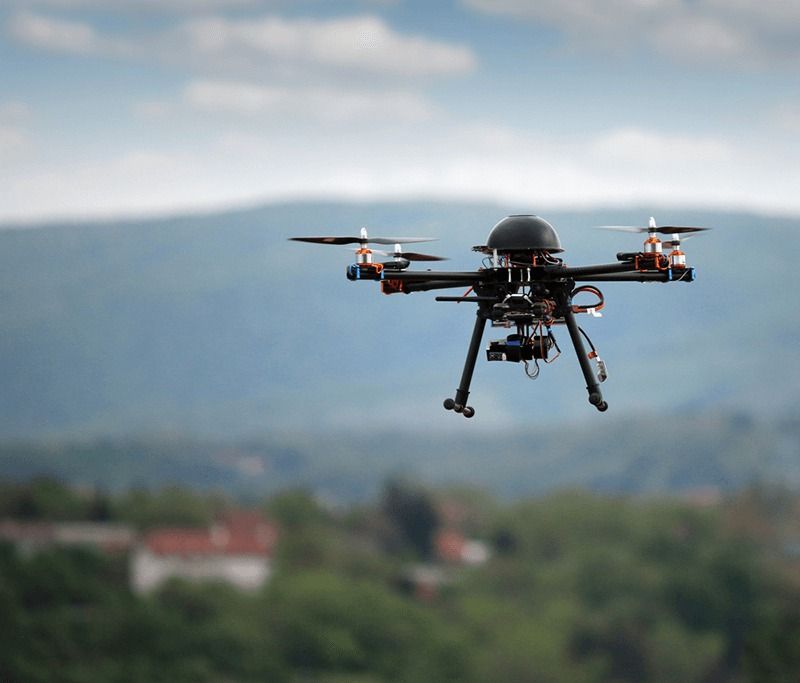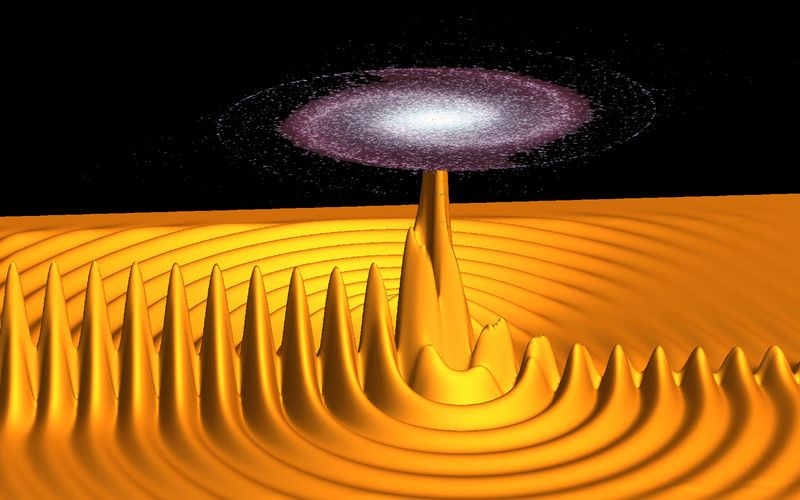Page 10957
Jan 27, 2017
The merging of humans and machines is happening now
Posted by Karen Hurst in categories: internet, robotics/AI
Of course it is and has been for a few years now with BMI tech, etc. However, it has drastically evolved in the recent 3 years. Can’t wait to see where we are in anouther 2 years…
Her organisation invented the internet. It gave us the self-driving car. And now DARPA’s former boss sees us crossing a new technological boundary.
Jan 27, 2017
Could Synthetic DNA Be the Next Tech Breakthrough?
Posted by Karen Hurst in categories: biotech/medical, genetics, robotics/AI, singularity
Is Synbio the next big thing? Hmmm; depends. If we’re talking about ensuring that we have a solid foundation/ infrastructure (including platforms; etc.) on QC 1st then with the existing evolution and maturity of the fundamentals around Synbio as a 1st step; then accelerating the further maturity of Synbio into creating super humans and singularity? My answer is yes. If we’re not even considering that we need QC and just focused on Synbio only; my answer is No as QC will be required as a foundation for things like real Humanoid AI, cell circuited humans/ super humans, etc.
Why we might soon be buying silk, wood, and more fabricated out of genetic code.
Jan 27, 2017
Pilots report more near-misses with drones over UK
Posted by Karen Hurst in category: drones
Hmmm; Have a feeling the over crowed satellite junk problem in the upper atmosphere is nothing compared to what we see with this in the next 5 years as we look at Amazon, UPS, FedEx, USPS, PizzaHut, Dominos, Local delivery services via drone, EMS drone responders, comcast troubleshoot & repair drones, etc.
Description: Collision ‘only narrowly avoided’, Author: Linsey McNeill — TravelMole Media Group LLC, Publish Date: 27 January 2017, Image:, Category: Travel News.
Jan 27, 2017
New Mexico Bill Would Place Limits on Drones; Hinder Federal Surveillance Program
Posted by Karen Hurst in categories: drones, law enforcement, surveillance
And, the laws are slowly try to catch up to tech.
SANTA FE, N.M. (Jan. 27, 2017) – A bill introduced in the New Mexico Senate would limit the warrantless use of surveillance drones. The legislation would not only establish important privacy protections at the state level, it would also help thwart the federal surveillance state.
Sen. Gerald Ortiz y Pino (D-Albuquerque) introduced Senate Bill 167 (SB167) on Jan. 19. Titled The Freedom from Unwanted Surveillance Act, the legislation would prohibit federal, state and local law enforcement from using a drone with the intent to gather evidence on private property without a warrant in most cases.
Jan 27, 2017
Quantum Breakthrough: Physicists Have Once More Created Time Crystals
Posted by Karen Hurst in categories: computing, quantum physics
In Brief
- Two more teams of researchers have found ways to create time crystals, lattices that repeat not in space but in time, breaking time-translation symmetry.
- Though applications are unclear, the research could help us better understand quantum properties and solve the problem of quantum memory associated with quantum computing.
Time crystals are strange. At the very least, they are a contradiction. A time crystal is quantum phenomenon that demonstrates movement while remaining in its ground, or lowest energy, state. Essentially a non-equilibrium form of matter, time crystals are lattices that repeat not in space but in time, breaking time-translation symmetry.
When the idea of a time crystal was proposed in 2012 by physicist and Nobel laureate Frank Wilczek, it was only a theoretical possibility that would challenge many of the laws of physics. Then, in October 2016, a team of researchers from the University of California, Santa Barbara (UCSB) managed to make a “floquet time crystal.”
Continue reading “Quantum Breakthrough: Physicists Have Once More Created Time Crystals” »
Jan 27, 2017
AT&T: Virtualization Ahead of Schedule
Posted by Karen Hurst in category: quantum physics
Another ISP going QC?
News this week included AT&T’s network virtualization, a quantum 2000Q, SIPconnect updates, Comcast cellular plans, and a fix for WebEx.
Jan 27, 2017
Simulating particle physics in a quantum computer
Posted by Karen Hurst in categories: particle physics, quantum physics, space, supercomputing
Particle physics is an interesting and complicated field of study. Its theoretical framework, the Standard Model, was developed during the second half of the twentieth century and it opened he possibility to explaining the behavior of the basic blocks of the Universe. It also classified all the particles, from the electron (discovered in 1897) to the Higgs Boson (found in 2012). It is not pretentious to claim that it is one of the most successful theories in Science.
Unfortunately, the Standard Model is also a very difficult theory to handle. By using an analytic approach many problems cannot be solved and computational methods require a huge computational power. Most of the simulations about this theory are performed in supercomputers and they have severe limitations. For instance, the mass of the proton can be calculated by the use of a technique called Lattice Quantum Chromodynamics (lattice QCD), but even using a supercomputer of the Blue Gene type the error was around 2% . This is a huge achievement that shows the utility of the theory, but it is also a signal about the necessity of developing new numerical tools to handle this kind of calculations.
One potential solution to this problem is to use quantum systems in order to perform the simulations. This idea is at the core of the field of quantum computing and it was first proposed by one of the pioneers in the study of particle physics, Richard Feynman . Feynman’s idea is easy to explain. Quantum systems are very difficult to simulate by the use of ordinary classical computers but by using quantum systems we can simulate different quantum systems. If we have a quantum system that we cannot control but we can mimic its dynamics to a friendly quantum system we have solved the problem. We can just manipulate the second system and infer the results to the first one.
Continue reading “Simulating particle physics in a quantum computer” »
Jan 27, 2017
Chiral Quantum Optics: A New Research Field with Bright Perspectives
Posted by Karen Hurst in categories: education, quantum physics
Recently, surprising physical effects were observed using special microscopic waveguides for light. Such “photonic structures” currently are revolutionizing the fields of optics and photonics, and have opened up the new research area of “Chiral Quantum Optics”. Physicists from Copenhagen, Innsbruck, and Vienna, who are leading figures in this field, have now written an overview on the topic which just appeared in the scientific journal “Nature”.
What one learns at school is that light oscillates under a right angle (transversal) with respect to its direction of propagation. Among experts, however, it was already known that light behaves differently when it is confined strongly in the transversal plane using so-called “photonic structures”. In particular, this is the case for special ultra-thin glass fibers which have a diameter of only a few hundred nanometers (one nanometer is a millionth part of a millimeter) and which are thereby smaller than the wavelength of light. Also waveguides based on so-called “photonic crystals” (two-dimensional structures with periodically arranged holes) can confine light in this way.
In this situation, the light also oscillates along its propagation direction (longitudinal). The combination of transversal and longitudinal oscillation leads to a rotating electric field which physicist call circular polarization. Without the spatial confinement, the electric field associated with circularly polarized light behaves like the propeller of an aircraft whose axis is parallel to the direction of propagation. “However, in narrow photonic waveguides, the electric field of the light resembles the rotor of a helicopter,” explains Arno Rauschenbeutel from the Vienna Center for Quantum Science and Technology at the Institute of Atomic and Subatomic Physics of TU Wien, Austria. Here, the spin of the light points along the axis of the rotor and is therefore oriented perpendicular to the propagation direction of the light.
Continue reading “Chiral Quantum Optics: A New Research Field with Bright Perspectives” »
Jan 27, 2017
5 Things That Happened at The Couture Shows
Posted by Karen Hurst in category: 3D printing
Bummed that I missed 3D Print Fashion Week.
To capture the most memorable moments, CNN Style commissioned fashion illustrator Velwyn Yossy to illustrate the highlights in her distinctive water colors.

















